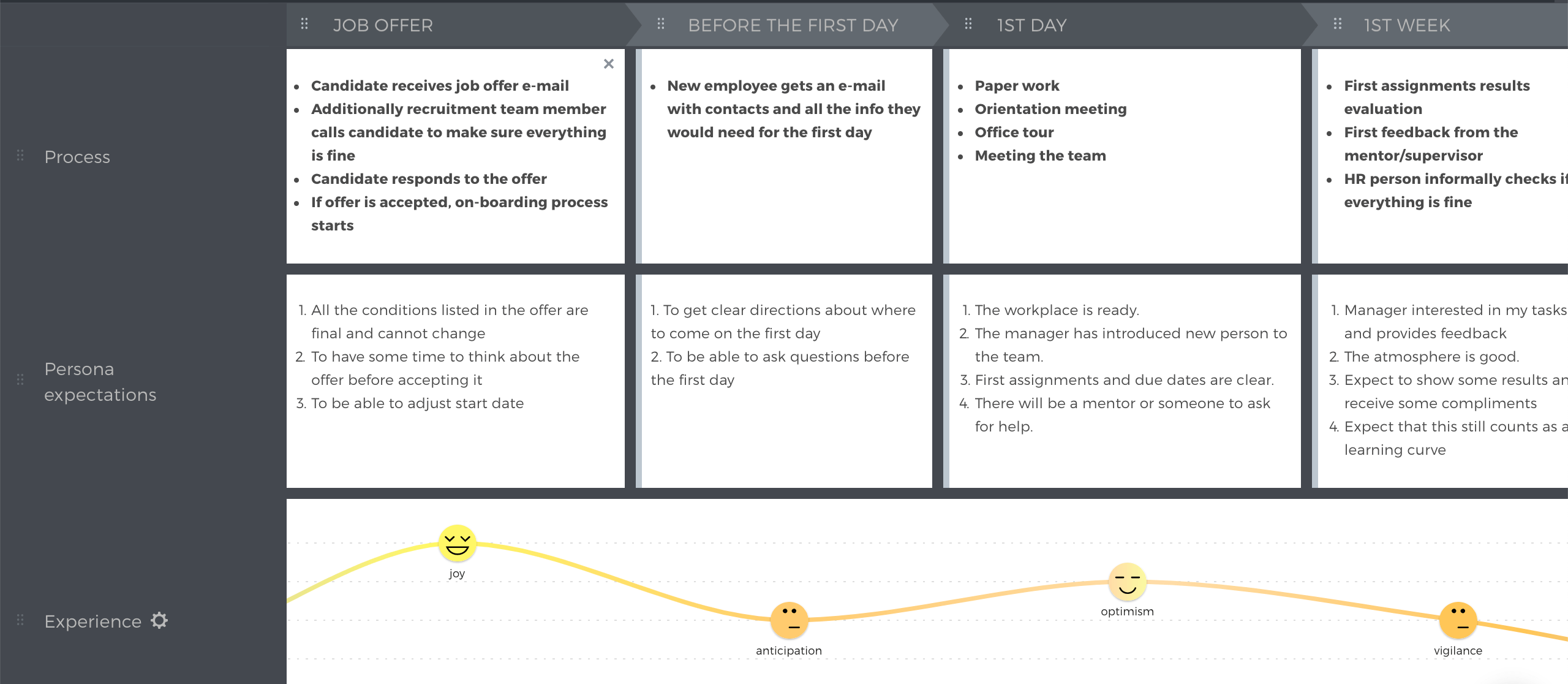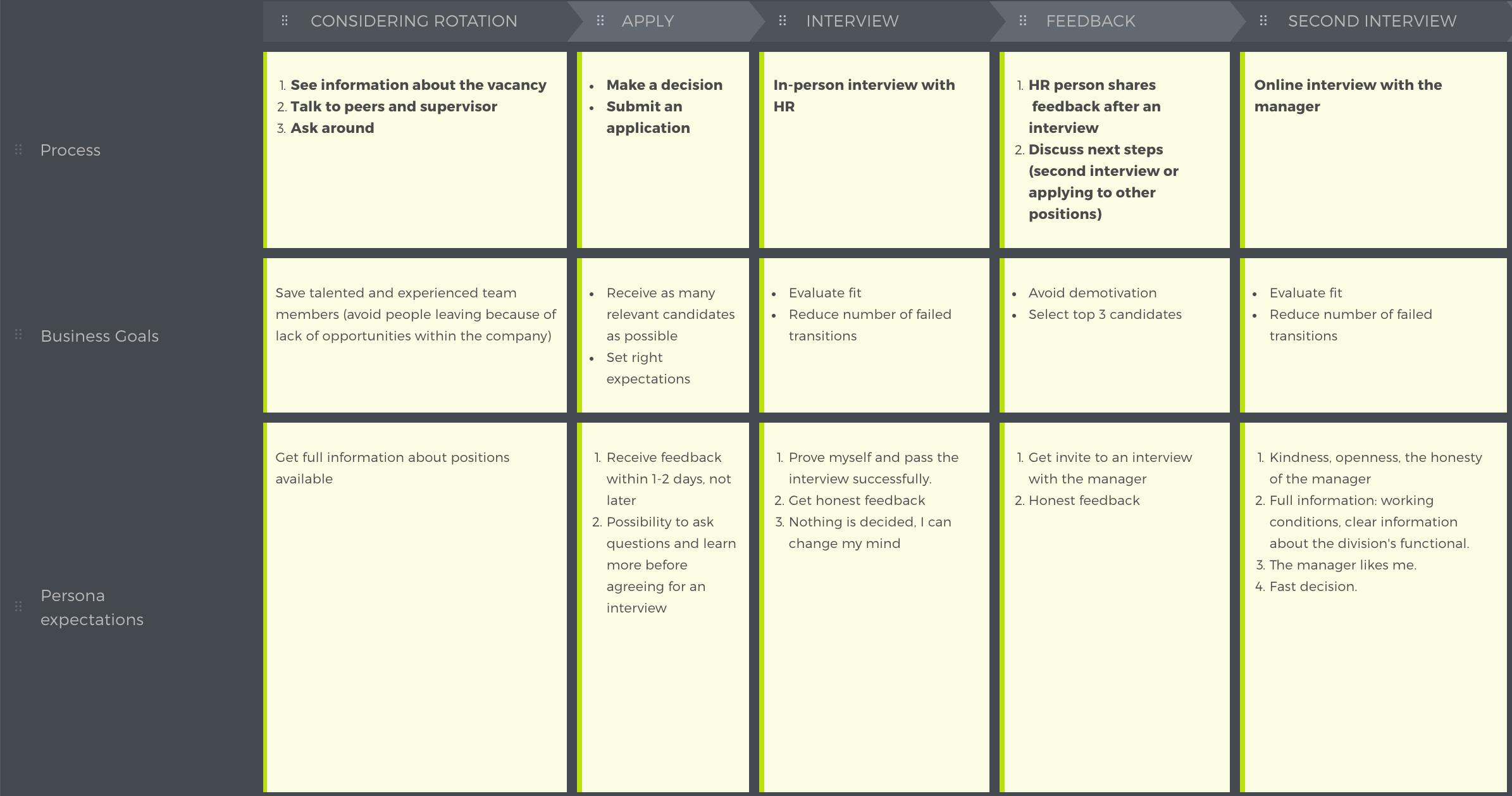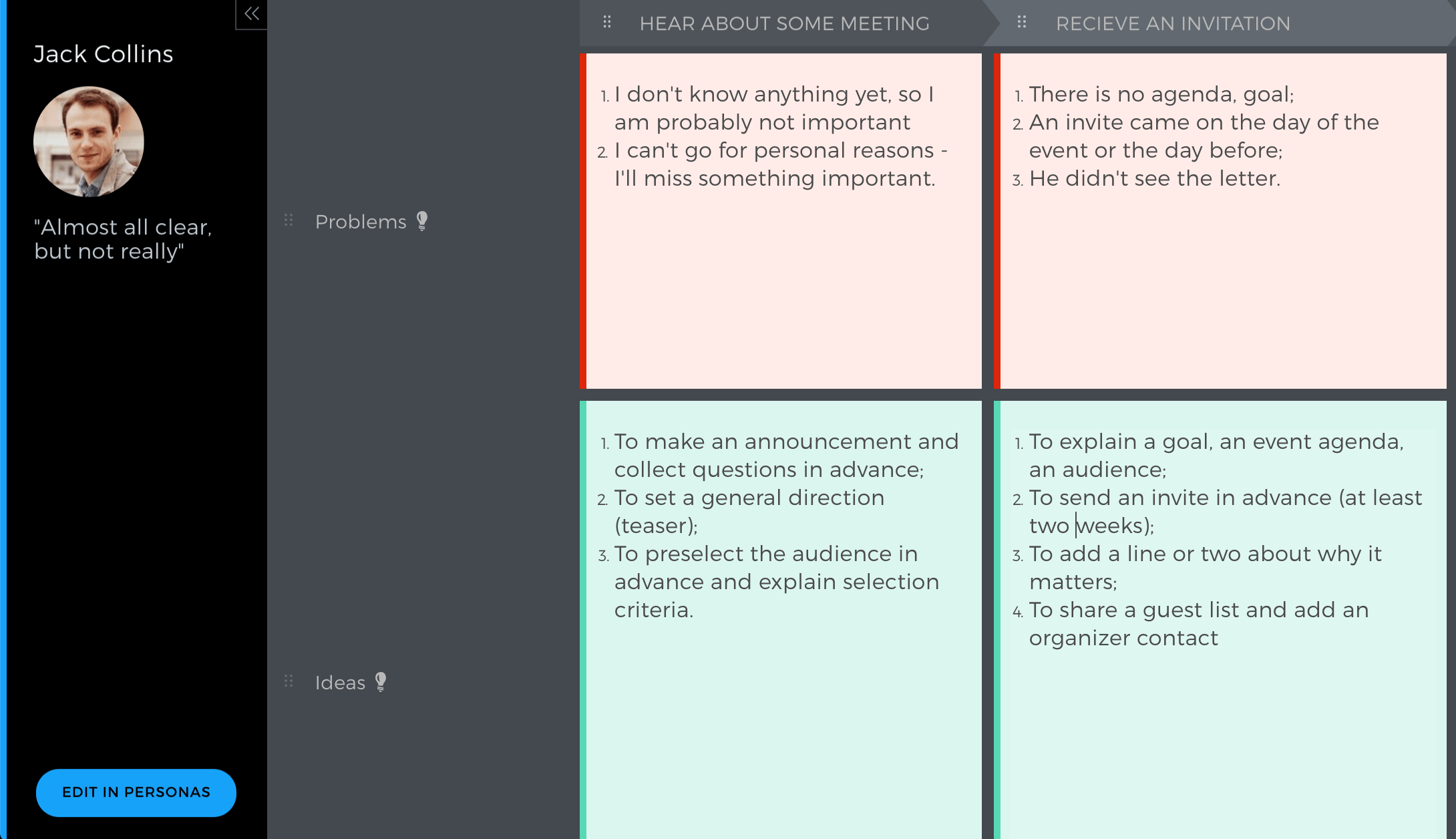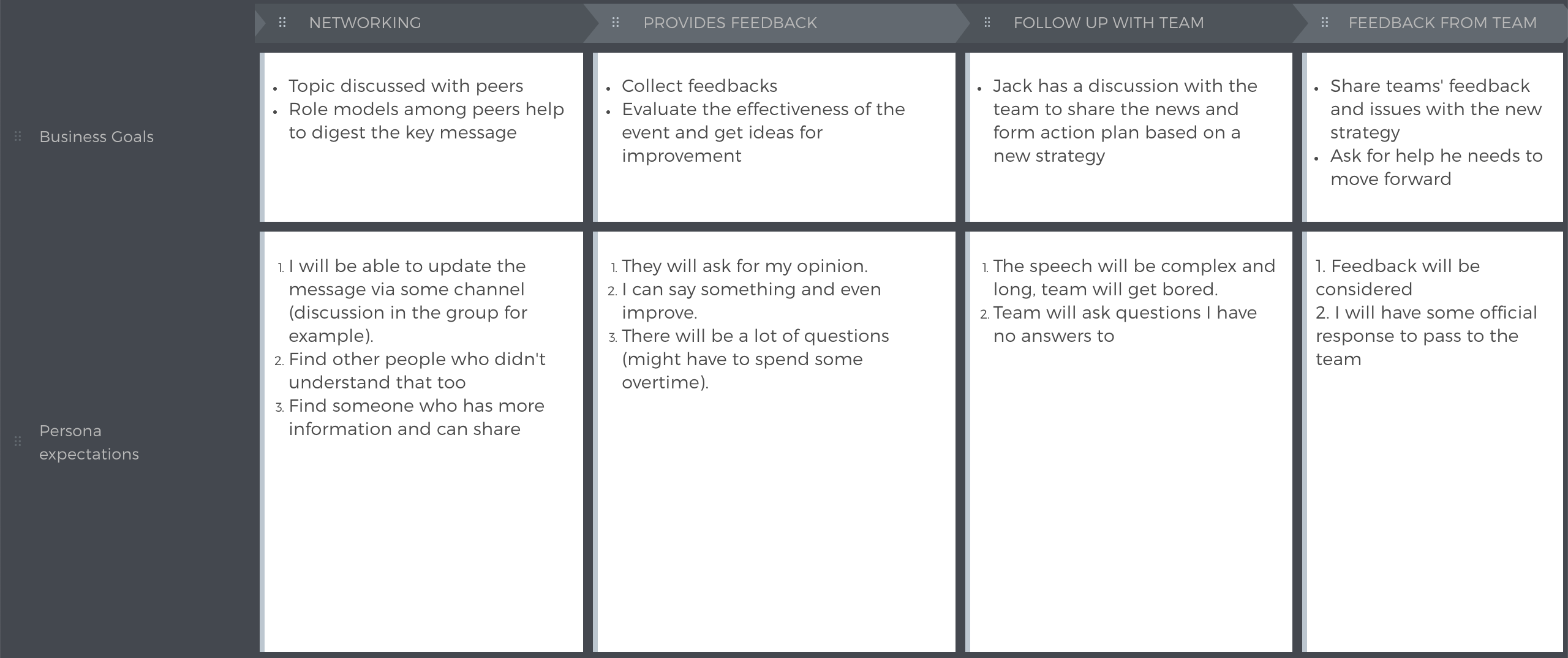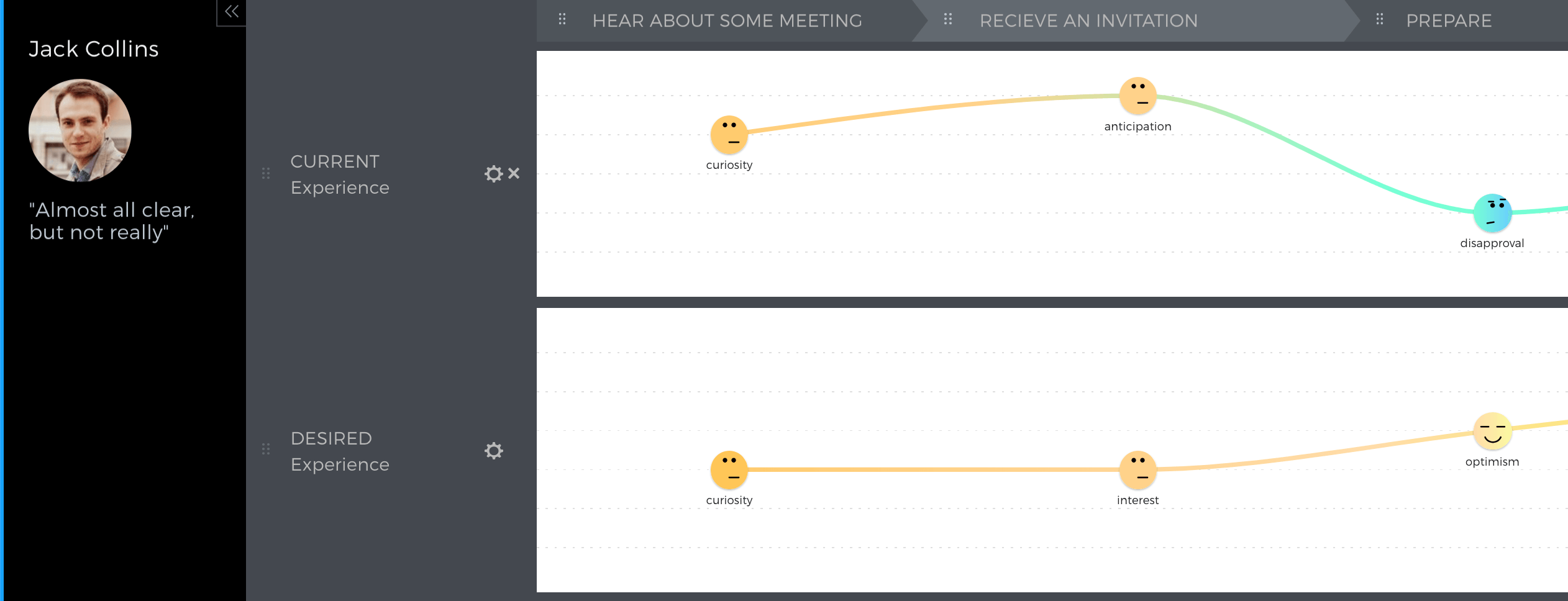Journey mapping is one of the most popular techniques when it comes to applying design thinking to people management. However, many HR teams get cold feet because the endeavor seems far too overwhelming.
This might be true for when you’re mapping the entire lifecycle in one sitting. Especially if you haven’t done journey mapping before and are trying to figure out whether this is the right instrument in the first place. So what do you do?
Start small.
You will have a chance to build the end-to-end journey later once you’re comfortable with journey mapping. And after you’ve had some success with it. Here are free templates that cover the entire employee lifecycle for high-level mapping. And a handy deck of cheat cards that will help you get over the initial blank page fear during journey mapping for employees.
To get there, you can start mapping smaller areas of people management that you would like to improve.
Here are some examples of those areas that might inspire you to come off the fence.
Onboarding process
Click to zoom
Onboarding sets the course for your relationships with staff members. So it makes perfect sense to start with this part of the journey.
Plus, chances are you already have just enough information on hand to start mapping.
Some tips for mapping out an onboarding process:
- Onboarding starts much earlier than the first day on the job. Start with receiving the job offer or even with the first interview.
- Design for several personas. Some people are explorers - they love to learn new things and environments. Others can be shy and need more guidance and help. Mapping journeys for both types will help you make room for flexibility while preserving overall process consistency.
- Invite recently on-boarded team members to your journey mapping workshop - they have a lot to say and will most likely become your #1 source of insights.
- Use longitude research methods to get insights from each point of the journey. You can ask new people on the team to document issues and successes they have from day one.
Internal mobility program
Click to zoom
Most companies have programs that let people change positions within the company. And not just by moving vertically, but also horizontally to learn new skills and gain new expertise.
This process is often tricky and sometimes outright scary. For many team members, it seems easier and safer to change the company than to apply to an internal vacancy.
Rethinking this part of the journey might help you with staff retention while letting workers feel safer and less likely to jump ship.
Some tips for mapping out this part of the journey:
- Start mapping from the moment the person starts thinking about moving to another position.
- Interview both the ones who successfully moved before and those who are just considering this possibility for the future.
- Find and interview people who thought of applying to the program and changed their minds.
- If you get a chance, talk to those who left the company instead of moving. And sure, having exit interview data at hand is very helpful too.
- Consider the role of managers in this process. No matter what your official policy says, they could influence the course of this journey big time. Keep them in mind when designing a perfect journey.
Designing corporate events or key meetings
Click to zoom
Imagine you are arranging a meeting where one of the VPs will be sharing strategy updates with a big team of managers. Mapping this meeting can help you design and facilitate it in a much better way as you will have a bigger picture. Most likely, you will discover unexpected gotchas and make sure the audience receives the message.
Click to zoom
Be it a conference, convention or a casual corporate party, you can design and plan it in a journey map format. That way you will ensure consistency in the planning and alignment of each stage of the event with the initial goals.
Some tips for mapping events and meetings:
- Make sure you have identified and set goals for each stage and you always check whether your ideas align with the goals.
- Go through each stage focusing on how you want participants to feel, think and behave. Then, think of affordances and features that will facilitate and encourage that behavior. Sometimes it’s useful to add both Desired and Current emotional graphs. When presenting your map to stakeholders, the gap between those graphs can win your case.
- Be brave to customize. Add ‘Communications’ as an additional layer and put all communications drafts in there to see how it looks together.
- If someone is taking the facilitator role for this meeting, invite them to the mapping session. Facilitation and human-centered design are a match made in heaven.
Wrap up
Try mapping small and let us know how it works for you! Next time we will see how to apply such a journey mapping to your performance evaluation or innovation programs.
Meanwhile, I invite you to try our journey mapping tool that will help you design beautiful maps with ease. And the best part is the maps are easily shareable and presentable so you can spread your insights across the company at lightning speed.
